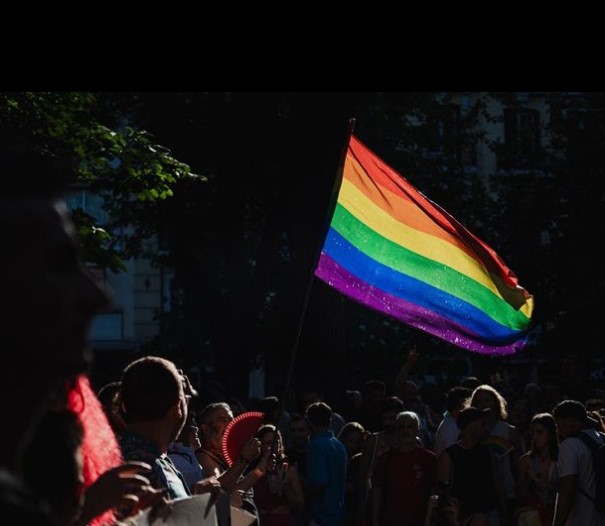The LGBTQIA+ community took out the 14th Delhi Queer Pride Parade on Sunday. The parade started from Barakhamba and concluded at Jantar Mantar. “Delhi Queer Pride march, where we dance, love, and rage on the streets of Delhi. We march to Jantar Mantar, at a time when even this single stretch of space provided for the expression of democratic sentiments is under threat,” stated an official statement.
Anyhow, if you ever wondered why the gay pride flag looks like a rainbow’s cool cousin? Well, hold on to your sparkly hats because the tale takes us on a groovy journey through LGBTQIA+ history since the funky ’70s. Picture this: a flag evolving from a mere idea to becoming the international symbol of love, diversity, and all things fab, representing the LGBTQ community worldwide. Let’s dive into the quick and fabulous chronicles of this attention-grabbing flag that stole the hearts of all genders and sexualities since its dazzling debut in the USA!
Design details:
The very first rainbow flag that was showcased for the masses appeared in 1978 and had eight colours. The flag was designed by Gilbert Baker, a San Francisco-based artist, who used symbolism from the civil rights movements and hippie movements across the USA and borrowed the ideologies of freedom and equality to create this colourful ode to queers. The original flag was designed using seven shades of the rainbow plus an additional hot pink to emphasis on sexuality. Later on, Baker had to drop the pink colour from the flag as he couldn’t find the hot pink stripe due to unavailability of hot pink fabric.
OG flag bearer:
According to the flag designer Baker, the various colours stood for divergent characteristics such as Hot pink (Sex), Red (Life), Orange (Healing), Yellow (Sunlight), Green (Nature), Blue (Magic/Art), Indigo (Serenity), Violet (Spirit). The flag made a striking public appearance during the San Francisco Gay and Lesbian Freedom Day Parade. And, it gained massive popularity after the assassination of gay right activist and San Francisco City Supervisor Harvey Milk on November 27, 1978. By next year, in 1979, the flag was modified again and blue colour stripe was removed from the flag as they couldn’t find an equal number of colours after dividing the flag into two parts.
Rainbow in 21st century:
The current version of the flag has six shades of colours, and is famous worldwide for its important role in the tumultuous history of LGBTQUI struggles throughout the East and the West. In a different version of the gay pride flag, another two stripes were added recently to create a POC (Person of Color) Rainbow flag. The two additional stripes in black and brown were added on the top of the six colours by the Philadelphia Office of LGBT Affairs in June 2019. The launched the ‘More Color More Pride’ campaign to add the representation of people of colour in the LGBTQ community, and created another version for the community.
Merch and more:
In recent times, the rainbow flag has been used extensively on designing merchandize like the keychains, coffee mugs, T-shirts, bumper stickers and more. Even in makeup, clothing, food and drinks etc. the popularly used in symbolic unicorns and rainbow references play an important role to garner more support from the straight group. Each year, during the gay pride month celebrations in June, the six-striped flag colours dominate the creative fields, billboards and social media. In the beautiful colours of the flag, one can feel the indomitable spirit of the LGBTQI community rising up and growing stronger with every obstacle that comes in its way.
